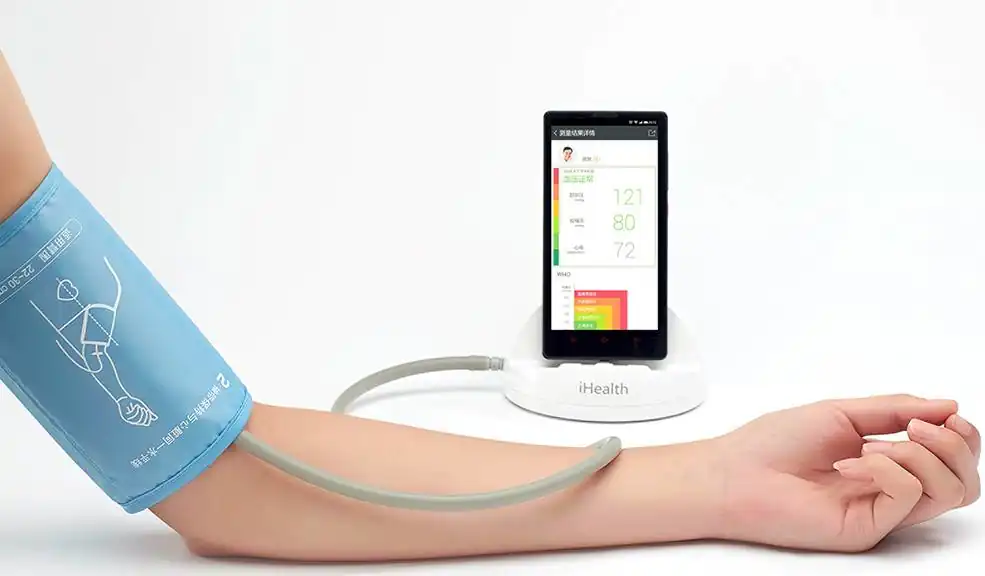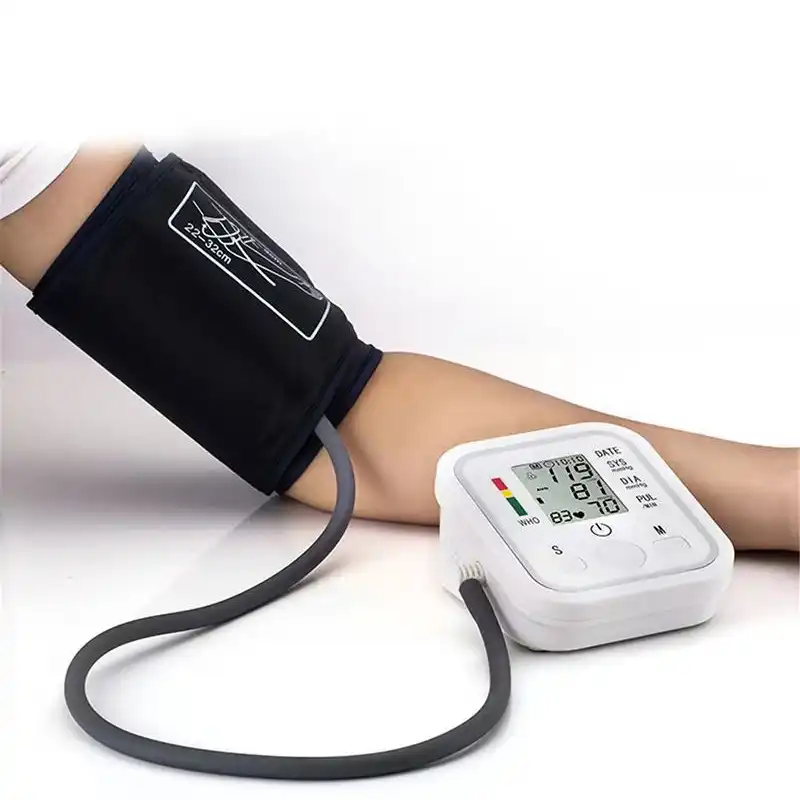To manage hypertension, regular blood pressure monitoring is crucial.
Advantages and Disadvantages of Electronic vs. Mercury Sphygmomanometers?
While mercury sphygmomanometers offer accurate measurements, they are cumbersome to operate and ideally require someone with professional medical knowledge. The average user may not master the operating techniques, limiting their use in ordinary households.
Electronic blood pressure monitors, on the other hand, completely avoid these issues. They are relatively portable and easy to operate, making them increasingly accepted by consumers.
How Do Electronic Blood Pressure Monitors Work?
Blood pressure refers to the force exerted by circulating blood on the walls of blood vessels. During one cardiac cycle, there are corresponding “systolic blood pressure” (commonly known as “top number”) and “diastolic blood pressure” (commonly known as “bottom number”).
Electronic blood pressure monitors utilize electronic pressure and pulse sensors to identify pressure and pulse signals, expressing them digitally to display systolic blood pressure, diastolic blood pressure, and pulse rate.
Their advantages include ease of operation and intuitive readings. Just pressing a button initiates automatic measurement, making them suitable for home use.
What Types of Electronic Blood Pressure Monitors Are There?
They are mainly divided into upper arm and wrist types.
Upper arm blood pressure monitors measure the brachial artery, and the cuff is placed on the upper arm. Therefore, their measurement stability is better than wrist blood pressure monitors, making them more suitable for older individuals, those with irregular heartbeats, and patients with peripheral vascular aging caused by diabetes.

Wrist blood pressure monitors are smaller, and measurements can be taken without rolling up sleeves when wearing many layers, making them a choice for frequent travelers or people in cold regions.

However, wrist blood pressure monitors measure blood pressure at the wrist, requiring extremely strict body positioning during measurement. To ensure accurate readings, the wristband should be kept at the same horizontal level as the heart.
Additionally, wrist electronic blood pressure monitors are not suitable for individuals with blood circulation disorders.
Conditions such as diabetes, hyperlipidemia, and hypertension can accelerate arteriosclerosis, leading to peripheral circulation disorders. The blood pressure readings at the wrist and upper arm can differ significantly in these patients, who should choose upper arm electronic blood pressure monitors.
How to Choose an Electronic Blood Pressure Monitor?
- Determine the type: Decide whether to choose an upper arm or wrist monitor based on your individual circumstances.
- Choose a comfortable cuff: The cuff material should be soft and skin-friendly.
- Good user experience: Considering that the main users of electronic blood pressure monitors are middle-aged and elderly, it should also have a large screen, clear display, backlight, and voice broadcast functions.
- Group memory function: As many families share a blood pressure monitor, a grouping function would make it convenient for all family members to monitor their blood pressure fluctuations over time.
- Measurement posture prompts (for wrist electronic blood pressure monitors): Incorrect posture during measurement can lead to inaccurate results. Blood pressure monitors with posture prompts can avoid inaccuracies caused by wrong positioning.
- Choose a reputable brand: Electronic blood pressure monitors need to be calibrated once a year, and the manufacturer must provide calibration services. Major brands offer better assurance in after-sales service.
How to Measure Blood Pressure at Home?
◆ Preparation Before Measurement
Avoid strenuous exercise, smoking, and alcohol consumption for 30 minutes before measurement. In a warm room, find a chair or sofa with a backrest and sit and rest calmly for 5 minutes.
◆ Measurement Procedure
During measurement, keep your arm relaxed and placed on a tabletop at heart level. Lean your back against the chair or sofa cushion, relax your legs, and measure calmly.
Incorrect arm position or tensing the arm can lead to significant errors in the measurement results. Either arm can be used.
The tightness of the cuff should be such that one finger can just fit underneath. A cuff that is too tight will impede blood flow; a cuff that is too loose will prevent blood vibrations from being fully transmitted to the cuff.

